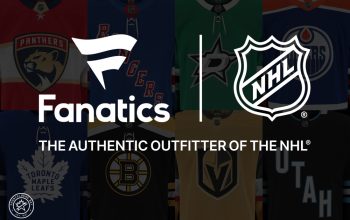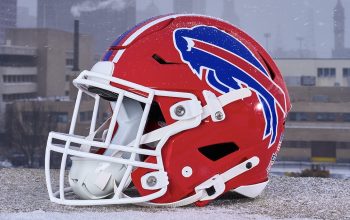
Hey everybody, gather ’round, it’s time for our annual “here’s a new spring football league” announcement post.
This time we welcome back the United States Football League for their second go ’round, now tied with the XFL for most kicks at the can (but the USFL does have the overall edge in seasons played per shot). The USFL was a spring league that ran from 1983 to 1985, the league planned switching to a fall schedule in 1986 but couldn’t muster the necessary finances to pull it off and they ultimately suspended operations… (dramatic pause) until now.
The 2022 USFL season will start in mid-April and run into June. Each of the eight teams will play a ten game schedule with the league broken up into two four-team divisions (North and South). Despite these eight teams taking on geographic names, every USFL game will be played in in a single yet-to-be-announced location, at least for the inaugural season.
“We’re excited to take this next major step in the development of a new USFL,” said Brian Woods, the USFL’s President of Football Operations. “These eight teams form the core of our initial league membership and will represent an exciting brand of professional football coming this spring. We look forward to the start of our inaugural season.”
The eight teams making up the new USFL are all identities that were a part of the original USFL, many of which are even taking the original logos from the ’80s with them into 2022.
BIRMINGHAM STALLIONS

The new Birmingham Stallions have updated the colour scheme of the original club from red and gold to more of a wine and gold (think Cleveland Cavaliers). The logo has been changed considerably with a very modern horse charging forward above an italicized team name. An alternate logo combines a “B” with a football in the new colour scheme.

The original Birmingham Stallions competed in each of the USFL’s three seasons, making the playoffs twice and even drafting Jerry Rice (though he never played a game for the club).
HOUSTON GAMBLERS

The Houston Gamblers return with the same primary logo and colour scheme as they originally used during their two season run in 1984 and 1985. The logo shows a red “G” with the state of Texas carved out of it and a gold star in the general vicinity of Houston, the team name below in black in an updated typeface. What’s also new is the club’s alternate logo, a red “H” in this same typeface with the laces of a football across the crossbar.

The original Gamblers played their home games out of the Houston Astrodome where two giant dice would be dropped onto the field before each game (… because they’re the Gamblers?). They made the playoffs in both of their seasons including a first place finish during the regular season portion of their inaugural year.
MICHIGAN PANTHERS

The Michigan Panthers, who’s original look has long been cited as a favourite amongst the logo and uniform crowd, return with a similar colour scheme: wine, gold, and blue. The primary logo has gotten a but of a makeover while keeping the same feel – a panther housed within a… rhombus? A new alternate logo shows an M.

The original Panthers played in and won the championship in the USFL’s inaugural 1983 season, beating the Philadelphia Stars (who have also returned, you’ll see them later in this post) at Mile High Stadium in Denver. The Panthers player their home games at the Pontiac Silverdome, drawing over 60,000 fans to their 1983 Semi-Final game against the Oakland Invaders.
NEW JERSEY GENERALS

The New Jersey Generals are, like the rest, slightly updating their mark from their original life. The five-star general design has been retained, placed again on a pair of laurel leaves. The typeface returns also with an update. A new alternate logo re-uses this font for an “NJ” design with a gold star dotting the “J”.

The original Generals played in all three of the first USFL’s seasons, after a lousy start to their first season the Generals went 14-4 in year two before a disappointing loss to the Philadelphia Stars in the semi-finals. Playing out of Giants Stadium, the Generals would typically average anywhere between 30,000 and 50,000 fans per game.
NEW ORLEANS BREAKERS

The Breakers are back in New Orleans! Apparently they’ve relocated from Portland back to Louisiana in a Los Angeles Ramsian/Oakland Raiders-eqsue fashion. The original club started in Boston as the Breakers in 1983, moved to New Orleans in 1984, and then up to Portland in 1985.

The new logo does keep the same feel as the original, the double blue and grey circle with a seagull flying within it – even the broken up typeface returns but again with a modernization.
PHILADELPHIA STARS

Much like the Breakers, the Stars are returning to city they called home earlier in their franchise history, moving from Philly to Baltimore in 1985 following two successful seasons playing out of Veterans Stadium. The Stars franchise was by far the best in the original run of the USFL, in their three seasons the Stars won two USFL Championships and lost the championship game in the other.

Another great job of modernizing the original look here, the new Stars logo takes the triple-star design, colours, and streaks, re-arranges them into a drop shadow. This same look is rolled out to the Liberty Bell alternate logo. Sadly the split-lettered typeface couldn’t make it to 2022, but you’ll notice the “A” in “STARS” is without the crossbar as it was in the original.
PITTSBURGH MAULERS

The Pittsburgh Maulers return following a single, disasterous season in the USFL in 1984, the team went 3-15 while drawing a respectable 53,000 fans to their opening game (not so much the rest of the way) at Three Rivers Stadium.

What also returns, unfortunately, is that orange and purple colour scheme which I’ve never been a fan of whenever it’s used (but, I mean, the Phoenix Suns find a way to make it work, though it gets broken up by a lot of black there). Like the rest, the logo is similar in construction to the original team’s look, an iron worker swinging a hammer inside a circle, just cleaned up and modernized. A new alternate logo crosses two purple hammers on an orange keystone with a silver football below.
TAMPA BAY BANDITS

Finally, the Tampa Bay Bandits. Why the Bandits? Well they were part-owned by Smokey and the Bandit star Burt Reynolds (the mascot of the team was named Smokey), it’s also where Steve Spurrier made his head coaching debut, running the team for all three of their seasons in the USFL from 1983-85.

Once again, the logo is a modernization of the original look, a scarf-wearing bandit on horseback runs away (or towards) a crime. Differences here focus on the details and proportional size of the bandit/horse figure as well as a new typeface. A new alternate logo is an interlocked “TB” in red.
Side-by-side time, here’s how you glow up after taking off for twenty-seven years:












